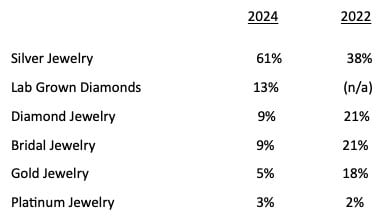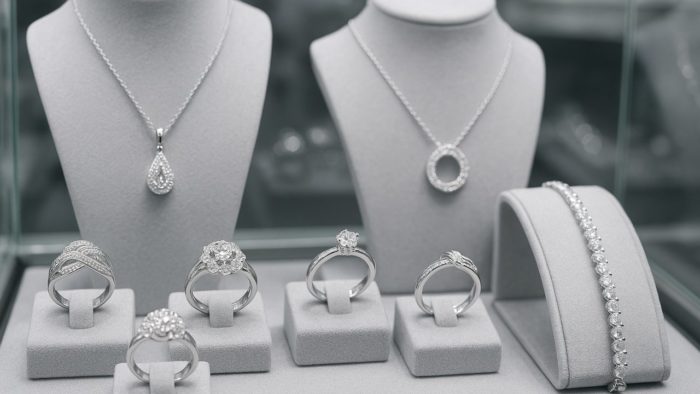(Mike Maharrey, Money Metals News Service) Silver jewelry demand is on the rise globally, another factor pushing the silver market to its fourth straight supply deficit in 2024.
The U.S. market is playing an important role in this trend.
Industrial silver demand set a record last year, but despite the increase in offtake, overall silver offtake declined by 3 percent to 1.16 billion ounces, primarily due to weak investment demand.
However, even with the slight decline, demand outstripped the silver supply for the fourth consecutive year. The structural market deficit came in at 148.9 million ounces. That drove the four-year market shortfall to 678 million ounces, the equivalent of 10 months of mining supply in 2024.
Silver jewelry demand grew by 3 percent to 208.7 million ounces in 2024.
According to the Silver Institute, India accounted for the bulk of these gains, driven by an import duty cut, a healthy rural economy, and the ongoing rise in purities.
The Silver Institute reported that improving exports to key Western countries also lifted silver jewelry demand. For instance, fabrication in Thailand grew by 13 percent.
“Western consumption was broadly steady, as positives, such as branded silver’s gains, balanced negatives, including cost-of-living issues.”
The Silver Institute recently released the results of a survey of U.S. jewelry retailers, finding that 53 percent reported marginally increased silver sales over the last survey period in 2022.
Meanwhile, 71 percent reported increasing their silver jewelry inventory last year, up from 61 percent in 2022. On average, they boosted their stock of silver jewelry by 15 percent.
Retailers reported that silver jewelry maintained the best margins during the holiday season.

Overall, silver jewelry accounted for about 31 percent of total jewelry sales, up from 28 percent in 2022.
The average store growth for silver jewelry sales was 20 percent in 2024, increasing from 14 percent in 2022.
Eighty-three percent of the retailers surveyed said silver was essential to their business, with 92 percent reporting optimism that silver jewelry sales will continue to grow for the next several years.
The survey also probed the reasons customers bought silver jewelry.
- Affordability – 80 percent
- Design options – 52 percent
- It’s a precious metal – 43 percent
- Versatility – 35 percent
- Craftsmanship – 31 percent
- Can be dressy or casual – 28 percent
- Multiple pieces can be worn together – 28 percent
- Pairs with white gold or platinum – 23 percent
- Makes a great keepsake – 14 percent
The 20-40 age range bought the most silver jewelry, followed by the 41-50 age group.
Jewelry demand accounts for about 18 percent of total silver demand. While the amount of silver used in jewelry manufacturing pales in comparison to the demand for the metal in the industrial and tech sectors, it still consumes a significant amount of silver. Growth in demand for silver jewelry will likely contribute to increasing overall demand, putting further pressure on already limited silver supplies.
Mike Maharrey is a journalist and market analyst for Money Metals with over a decade of experience in precious metals. He holds a BS in accounting from the University of Kentucky and a BA in journalism from the University of South Florida.

